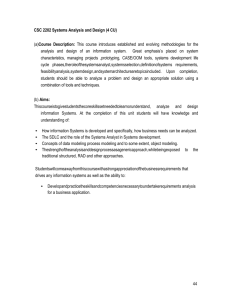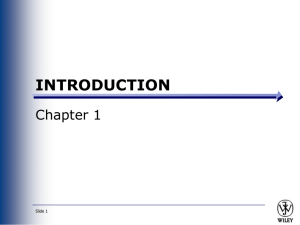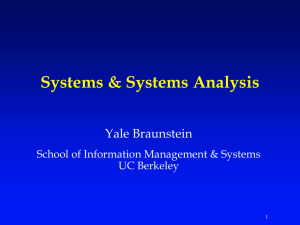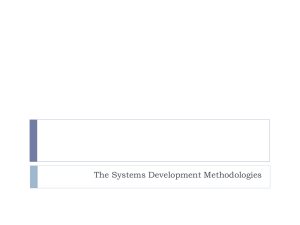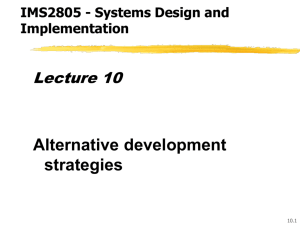PROTOTYPING:: Prototyping is the process of building a model of a
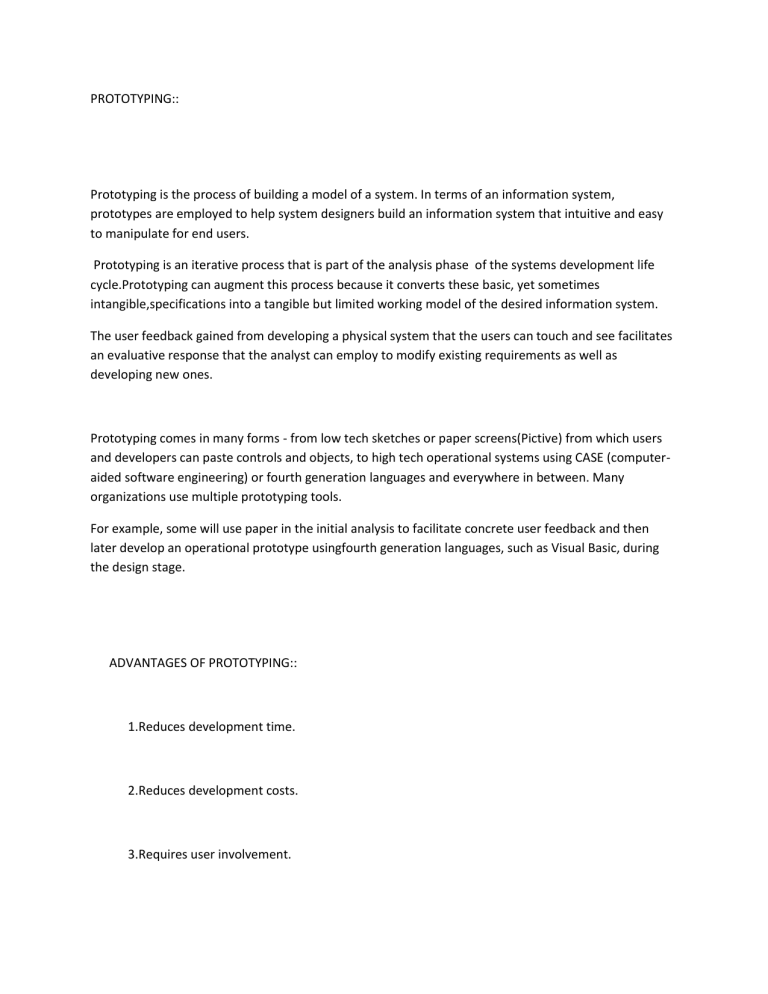
PROTOTYPING::
Prototyping is the process of building a model of a system. In terms of an information system, prototypes are employed to help system designers build an information system that intuitive and easy to manipulate for end users.
Prototyping is an iterative process that is part of the analysis phase of the systems development life cycle.Prototyping can augment this process because it converts these basic, yet sometimes intangible,specifications into a tangible but limited working model of the desired information system.
The user feedback gained from developing a physical system that the users can touch and see facilitates an evaluative response that the analyst can employ to modify existing requirements as well as developing new ones.
Prototyping comes in many forms - from low tech sketches or paper screens(Pictive) from which users and developers can paste controls and objects, to high tech operational systems using CASE (computeraided software engineering) or fourth generation languages and everywhere in between. Many organizations use multiple prototyping tools.
For example, some will use paper in the initial analysis to facilitate concrete user feedback and then later develop an operational prototype usingfourth generation languages, such as Visual Basic, during the design stage.
ADVANTAGES OF PROTOTYPING::
1.Reduces development time.
2.Reduces development costs.
3.Requires user involvement.
4.Developers receive quantifiable user feedback.
5.Facilitates system implementation since users know what to expect.
6.Results in higher user satisfaction.
7.Exposes developers to potential future system enhancements.
RAPID APPLICATION DEVELOPEMENT(RAD) ::
Rapid Application Development is a software development methodology, which involves iterative development and the construction of prototypes. It is a merger of various structured techniques, especially data driven Information Engineering with prototyping techniques to accelerate software systems development.
RAD calls for the interactive use of structured techniques and prototyping to define user's requirementsand design the final system.Using structured techniques,the developer first builds preliminary data models and business process models of the business requirements.
ADVANTAGES OF RAD ::
1.Promotes strong collaborative atmosphere and dynamic gathering of requirements.
2.Business owner actively participates in prototyping, writing test cases and performing unit testing.
JOINT APPLICATION DEVELOPEMENT(JAD)::
Joint Application Development (JAD) is a process used in the Systems Development Life Cycle (SDLC) to collect business requirements while developing new information systems for a company.
"The JAD process also includes approaches for enhancing user participation, speed up the processof development, and improving the quality of specifications." It consists of a workshop where knowledge workers and IT specialists meet, sometimes for several days, to define and review the business requirements for the system.The attendees include high level management officials who will ensure the product provides the needed reports and information at the end. This acts as a management process which allows
Corporate Information Services (IS) departments to work more effectively with users in a shorter time frame.
Through JAD workshops the knowledge workers and IT specialists are able to settle conclusively any difficulties or differences between the two parties regarding the new information system.
SYSTEM DEVELOPEMENT LIFE CYCLE(SLDC) ::
The Systems Development Life Cycle (SDLC), or Software Development Life Cycle in systems engineering and software engineering, is the process of creating or altering systems, and the models and methodologies that people use to develop these systems.
The concept generally refers to computer or information systems.
In software engineering the SDLC concept underpins many kinds of software development methodologies. These methodologies form the framework for planning and controlling the creation of an information system.
ADVANTAGES::
1. Control.
2. Monitor Large projects.
3. Detailed steps.
4. Evaluate costs and completion targets..
5. Documentation.
6. Well defined user input.
7. Ease of maintenance.
8. Development and design standards.
9. Tolerates changes in MIS staffin
Out of all the methodologies for IT management, RAD i.e. rapid application developement is most beneficial for managing IT projects as it combines prototyping,joint Application Development and implementation of CASE tools.
The advantages of RAD are speed,reduced development cost, and active user involvement in the development process.
